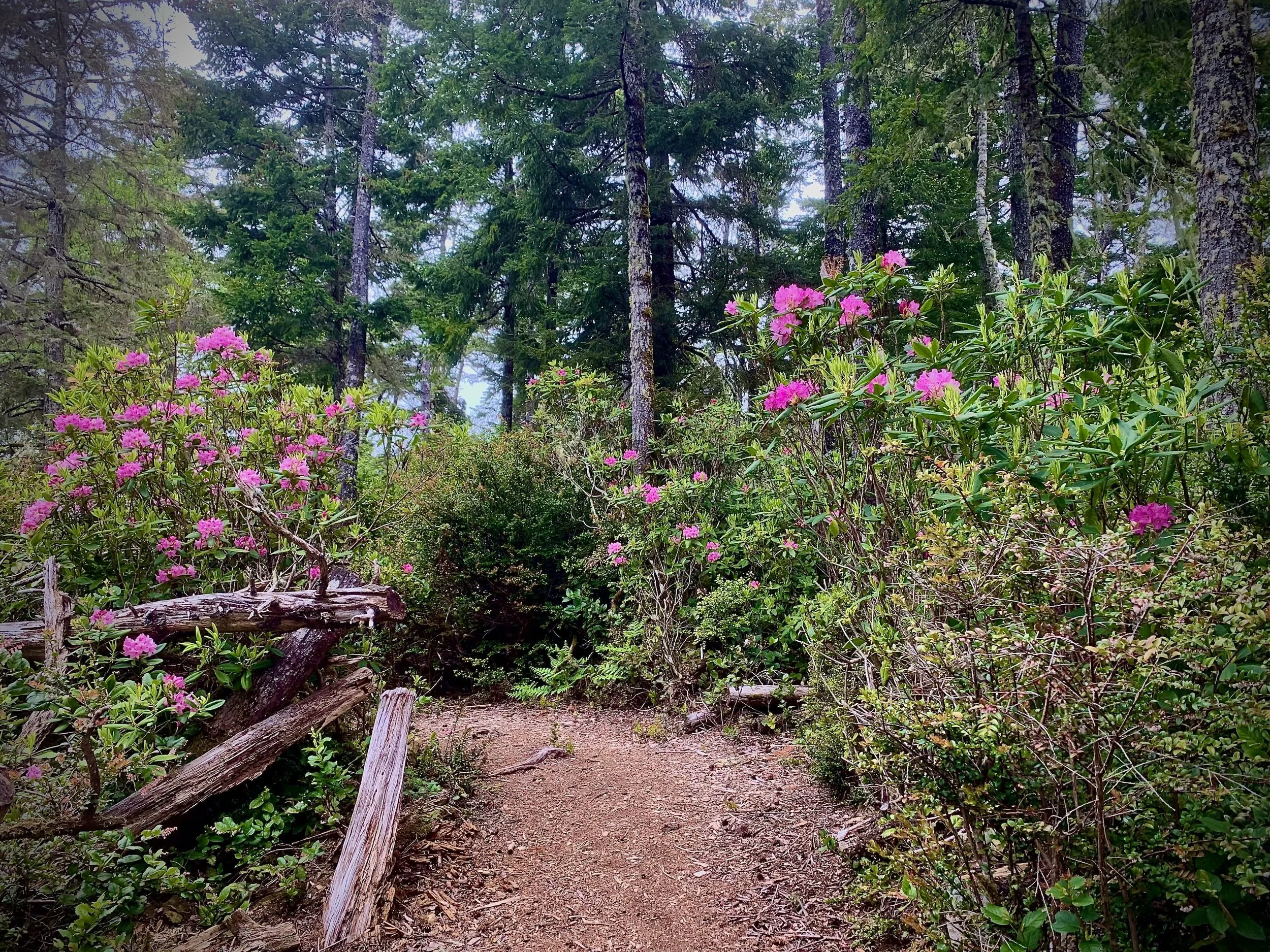Take a rhod trip to the wetlands
Catch the brief but dazzling bloom of wild rhododendrons in Lincoln City
Story and photo by Eliot Sekuler
For the TODAY
Layers of wood chips and mulch soften the steps along the half dozen connecting trails that crisscross the Cutler City Wetlands Open Space, pathways lined with deep green thickets of salal, elderberry and evergreen huckleberry. The trails wind and loop through a terrain that is remarkably diverse for an area only slightly more than 26 acres. At the eastern end and in the center, are the swampy ponds or skunk-weed marshes that give the open space its name. There are also a few majestic old-growth Sitkas, thick stands of alders and shore pines, their trunks cloaked in the pale green feathers of Oregon beaked moss.
At the open space’s western side, extending all the way through its center, there are dark green shrubs of species R. macrophyllum, aka the Western rhododendron — the wild rhododendron that comes alive from late April through mid-May, and transforms large swaths of the Cutler City Open Space into a wonderland of vivid, bell-shaped, Barbie-pink blossoms.
The experience of the rhododendron bloom is especially magical in the early morning and late afternoon hours, when the heron nests are active and the chirping birdsong from Wilson’s warblers, wren and yellowthroat almost drown out the sounds from the coast highway. On a sunny day, rays of light filtering through the brush give the pink blossoms an iridescent quality.
Most easily accessible from the trailhead entrance in the 6400 block of SW Inlet Avenue, the rhododendrons are especially abundant on the West and Alder Trails and on the Frodo Trail North. Protected within the open space’s boundaries, the shrubs are remnants of a thick copse of the plants that covered large parts of Cutler City before the area was developed in the 1940s and 1950s and before it merged with its neighboring towns to form present-day Lincoln City in 1964.
According to Day Farrald, president of the Siuslaw Chapter of the American Rhododendron Society, rhododendrons are especially well-suited to the Northwestern coastal climate and they thrive along the Pacific coastline from British Columbia through Oregon and Northern California. Washington named R. macrophyllum as its state flower in 1892.
“The Northwest coast is idyllic,” he said. “You couldn’t ask for more. It’s not too hot, not too cold. We get a lot of moisture except in the summertime, but these plants have acclimated themselves very well. The leaves will curl up during the summer days and at the first rain, they’ll open.”
Farrald is based in Florence, where, for the past 117 years, the city has been celebrating its Florence Rhododendron Festival annually during the third weekend in May. Years ago, between 1938 and 1941, Cutler City sponsored its own rhododendron event, The Rhododendron Days and May Festivals of Beauty, and the town was designated “The Rhododendron Capital of North Lincoln County” by the now-defunct North Lincoln Rhododendron Society.
Much of the rhododendron bloom that was so notable in Cutler City is long gone, but residents and visitors can be grateful that the stunning flowers were preserved through Lincoln City’s creation of the open space program in 1998. The Cutler City Wetlands is one of seven Lincoln City open spaces, which are well-maintained by the city’s Parks and Recreation Department. The Cutler City trails were recently improved to allow better access during the rainy season.
“This past year, we raised the trail in the wet lowland areas with mulch to combat some of the trail erosion,” said department director Jeanne Sprague.
Those interested in experiencing this year’s rhododendron bloom shouldn’t delay. The flowers are at their peak through mid-May, and by the month’s end, the last of the pink petals will have fallen on the trails and into the brush.
For more information on the Cutler City Wetlands and other Lincoln City open spaces, go to lincolncity.org/visitors/parks-open-spaces.

